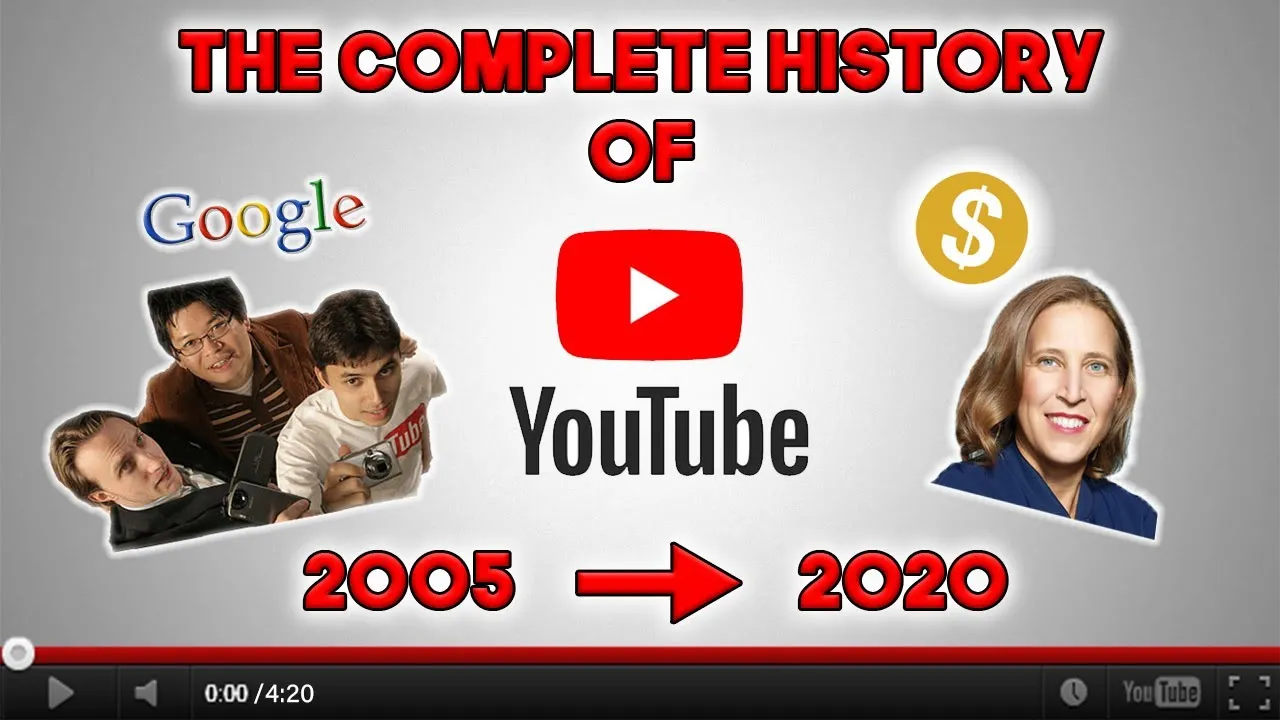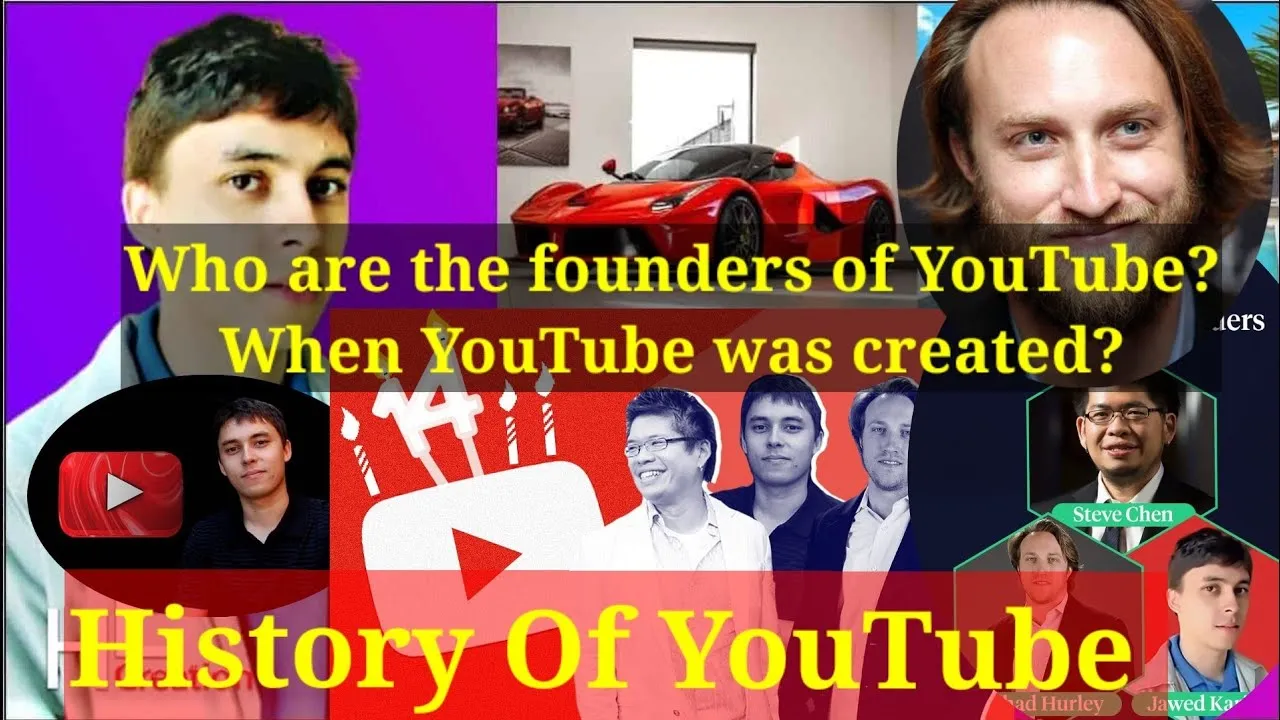YouTube has become a household name since its inception. This platform has revolutionized how we consume video content, offering an endless supply of entertainment, education, and inspiration. With over 2 billion logged-in monthly users, YouTube serves as a crucial space for creators, businesses, and consumers alike. Whether you’re watching a music video, learning a new skill, or getting lost in vlogs,
From its humble beginnings to its status as a cultural giant, YouTube has reshaped our digital landscape. It’s not just a platform; it’s a community where people from all walks of life come together. As we delve into the history and ownership of YouTube, we’ll uncover the fascinating journey of how it became the go-to site for video sharing and the impact it has had on society.
The Founding of YouTube

YouTube was founded in February 2005 by three former PayPal employees: Chad Hurley, Steve Chen, and Jawed Karim. The idea sprang from their vision of creating a user-friendly platform where anyone could upload, share, and view videos easily. Here’s a closer look at the origins of this revolutionary platform:
- Initial Concept: The trio recognized the challenges of sharing videos online. Early attempts were often cumbersome, involving lengthy uploads and complex formats. They aimed to simplify this.
- Launch Date: YouTube officially went live in October 2005, offering a sleek interface that made uploading and embedding videos a breeze.
- First Video: On April 23, 2005, Jawed Karim uploaded the first video titled "Me at the Zoo," which has since become an iconic piece of internet history.
- Funding: In November 2005, Sequoia Capital invested $3.5 million in YouTube, fueling its growth and refining its features.
This early phase saw YouTube rapidly gain traction, with users flocking to the platform for its simplicity and accessibility. By the end of 2005, YouTube had achieved impressive milestones, leading to its acquisition by Google in November 2006 for $1.65 billion in stock. This acquisition set the stage for
Also Read This: Behance portfolio PDF conversion
Key Milestones in YouTube's Development

YouTube has had a fascinating journey since its inception, marked by several key milestones that shaped it into the platform we know today. Let's explore some of these pivotal moments:
- Founding (2005): YouTube was founded by Steve Chen, Chad Hurley, and Jawed Karim in February 2005. The first video, "Me at the zoo," was uploaded by Karim on April 23, 2005.
- Launch of Public Beta (2005): In May 2005, YouTube launched its public beta, allowing anyone to upload and share videos. This marked the beginning of user-generated content.
- First Viral Video (2006): The video "Evolution of Dance" became one of the first viral hits on the platform, highlighting YouTube's potential to reach massive audiences.
- Partner Program (2007): YouTube introduced the Partner Program, enabling content creators to monetize their videos, which set the stage for the rise of YouTube influencers.
- HD Video Support (2008): YouTube officially launched support for HD videos, enhancing the viewing experience for users and attracting a more diverse range of content.
- Mobile App Launch (2010): The release of the YouTube mobile app made it easier for users to access content on the go, significantly increasing viewership.
- Introduction of Live Streaming (2011): YouTube began offering live streaming capabilities, allowing users to broadcast events in real-time, further expanding the platform's versatility.
These milestones not only reflect YouTube's growth but also its impact on modern media and communication, setting the foundation for the content creation industry as we know it today.
Also Read This: Why Do YouTube Videos Keep Stopping and How to Fix Playback Issues
Acquisition by Google
The acquisition of YouTube by Google in 2006 was a game-changer for both companies, marking a significant shift in the landscape of online video. Here’s how it unfolded:
- Initial Acquisition (2006): In November 2006, Google announced its acquisition of YouTube for approximately $1.65 billion in stock. This bold move was driven by a growing interest in online video and the potential it held for advertising.
- Integration of Technologies: Post-acquisition, Google integrated its advertising platform, Google AdSense, with YouTube, enabling more effective monetization strategies for creators and transforming the platform’s revenue model.
- Increased Infrastructure: Google’s resources allowed YouTube to significantly improve its infrastructure, resulting in better video quality, faster loading times, and enhanced user experience.
- Content Regulations: The acquisition prompted stricter content regulations and copyright enforcement, leading to the implementation of Content ID technology to protect creators' rights.
- Innovation and Growth: Under Google’s ownership, YouTube expanded its services, introducing features like YouTube Premium, YouTube TV, and original programming, further solidifying its position as a leader in online video.
The acquisition was a strategic move that not only benefited Google by enhancing its advertising ecosystem but also helped YouTube thrive by leveraging Google’s technology and expertise.
Also Read This: Ordering Guide for Fortiguard Downloader Services
Current Ownership Structure
YouTube, the colossal video-sharing platform, is currently owned by Google, which is a subsidiary of Alphabet Inc. This ownership structure has evolved since YouTube's inception in 2005 when it was created by three former PayPal employees: Chad Hurley, Steve Chen, and Jawed Karim. In November 2006, Google acquired YouTube for a whopping $1.65 billion in stock, a move that solidified its place in the digital landscape.
Now, let's break down the ownership structure:
- Alphabet Inc. - The parent company of Google, overseeing YouTube and other subsidiaries.
- Google - The tech giant that manages YouTube's operations, development, and advertising strategies.
- YouTube LLC - A subsidiary of Google, specifically configured to handle YouTube's platform, user policies, and content management.
This structure allows YouTube to benefit from Google's extensive resources, technology, and advertising prowess. With more than 2 billion monthly logged-in users, YouTube has become an essential part of Google’s ecosystem, integrating features like Google Ads and YouTube Premium, enhancing the platform's revenue streams while providing creators with diverse monetization options.
Also Read This: How to Use Shutterstock for Free and Access Quality Content
The Impact of Ownership on YouTube's Evolution
The evolution of YouTube has been significantly influenced by its ownership under Google. Since the acquisition, several key changes have shaped the platform's trajectory:
| Year | Development |
|---|---|
| 2007 | Introduction of the Partner Program, allowing creators to monetize their content. |
| 2010 | Launch of YouTube Live, marking its entry into live streaming. |
| 2015 | Debut of YouTube Red (now YouTube Premium) for ad-free viewing. |
| 2020 | Enhanced policies focusing on content moderation and creator support. |
Under Google’s ownership, YouTube has embraced innovation and adaptation. For example, the introduction of algorithms to recommend videos has personalized user experiences but also sparked debates about content quality and creator visibility. Additionally, Google’s strong focus on advertising has revolutionized how creators earn revenue.
In summary, YouTube’s ownership by Google has not only provided a stable financial backbone but has also spurred significant changes, ensuring the platform remains relevant and influential in an ever-evolving digital world.
Exploring the Ownership and History of YouTube
YouTube, launched in February 2005, has evolved into the world's largest video-sharing platform. Originally founded by three former PayPal employees—Chad Hurley, Steve Chen, and Jawed Karim—the platform quickly gained popularity for its user-friendly interface and vast array of content. Within just a year of its inception, YouTube attracted millions of users and became the go-to site for video streaming.
In November 2006, Google acquired YouTube for a staggering $1.65 billion in stock, marking a significant milestone in the platform's history. This acquisition provided YouTube with the resources needed to scale its operations and enhance its offerings. Over the years, YouTube has introduced various features, including:
- Monetization Options: Allowing content creators to earn revenue through ads.
- YouTube Premium: A subscription service offering ad-free viewing and exclusive content.
- YouTube TV: A live TV streaming service that includes major networks.
- Content Partnerships: Collaborations with brands and creators for sponsored content.
As of 2023, YouTube boasts over 2 billion logged-in monthly users and is available in over 100 countries. It continues to expand its influence across the globe, becoming a significant player in entertainment, education, and marketing.
| Year | Event |
|---|---|
| 2005 | YouTube is founded. |
| 2006 | Google acquires YouTube. |
| 2010 | YouTube introduces monetization options for creators. |
| 2015 | YouTube launches YouTube Red, later renamed YouTube Premium. |
In conclusion, YouTube's journey from a startup to a global powerhouse reflects not only its adaptability but also its crucial role in shaping digital content consumption. As it continues to innovate and respond to user needs, the future of YouTube ownership remains an intriguing topic for both creators and consumers alike.